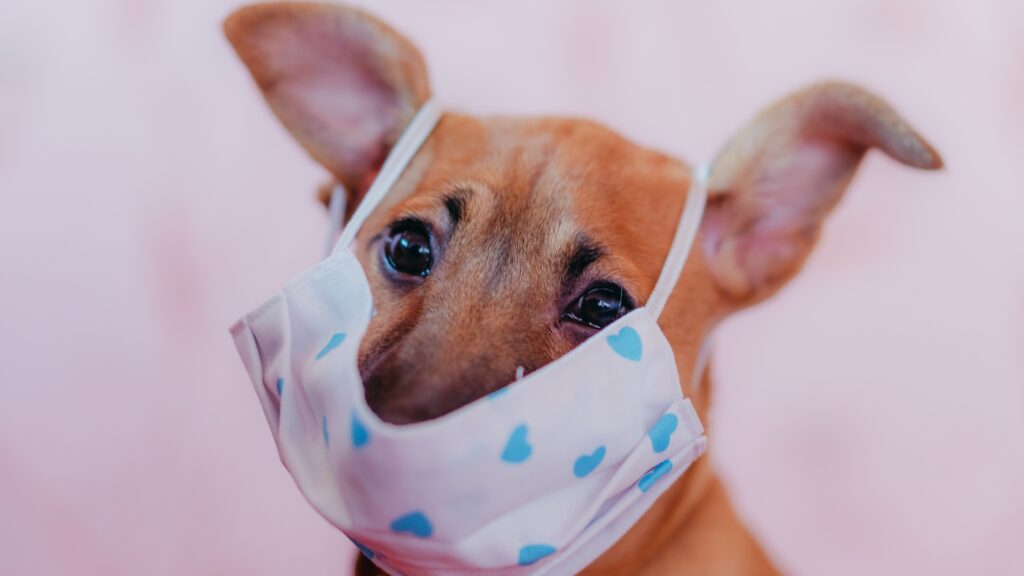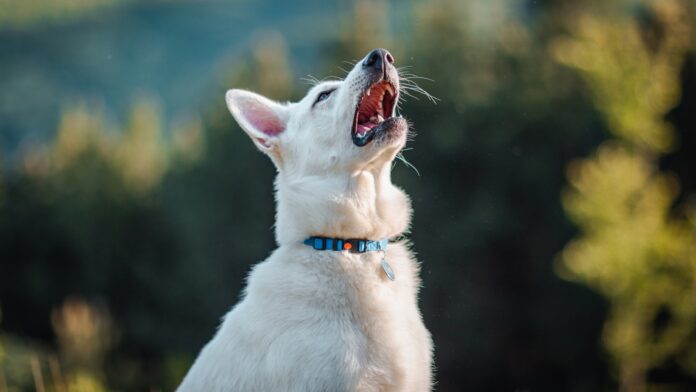Reverse sneezing in dogs can be alarming, but it’s usually harmless. Learn about its causes, symptoms, and effective management strategies to keep your pet comfortable.
Introduction
This is a common yet often misunderstood phenomenon. Many pet owners panic when they witness their dog experiencing an episode, mistaking it for a more serious respiratory problem. Understanding reverse sneezing in dogs, its triggers, symptoms, and treatment options can help pet owners manage this condition effectively and ensure their furry friends remain healthy and happy.
ALSO READ: Relieve Your Dog’s Joint Pain with Nutritional Supplements
What is Reverse Sneezing in Dogs?
Also known as inspiratory paroxysmal respiration, occurs when a dog rapidly pulls air into its nose, creating a distinctive snorting or honking sound. This is the opposite of a regular sneeze, where air is forcefully expelled out through the nose. During a reverse sneezing episode, dogs often stand still with their neck extended and make loud, gasping noises, which can be alarming but are typically not harmful.
Causes of Reverse Sneezing in Dogs

Understanding the triggers of reverse sneezing in dogs can help in managing and preventing episodes. Some common causes include:
- Irritants: Exposure to environmental irritants like pollen, dust, smoke, or strong odors can trigger reverse sneezing in dogs.
- Allergies: Dogs with allergies to certain foods, plants, or other substances may experience more frequent episodes.
- Excitement or Stress: High levels of excitement or stress can lead to reverse sneezing in dogs.
- Respiratory Infections: Infections of the upper respiratory tract can cause irritation and lead to reverse sneezing in dogs.
- Nasal Mites: These tiny parasites can infest a dog’s nasal passages, leading to irritation and reverse sneezing in dogs.
- Anatomical Factors: Certain breeds, particularly brachycephalic breeds like Pugs and Bulldogs, are more prone to reverse sneezing in dogs due to their anatomical structure.
Symptoms:
Recognizing the symptoms of reverse sneezing in dogs is crucial for differentiating it from other respiratory conditions. Common signs include:
- Sudden, rapid, and repeated inhalations through the nose
- Loud snorting or honking sounds
- Standing still with neck extended
- Bulging eyes or a distressed expression
Despite the alarming appearance, most episodes of reverse sneezing in dogs are short-lived, typically lasting less than a minute.
Diagnosing:
While reverse sneezing in dogs is generally harmless, frequent or severe episodes warrant a visit to the veterinarian. A vet can perform a thorough examination to rule out other conditions such as respiratory infections, nasal polyps, or foreign objects lodged in the nasal passages. In some cases, diagnostic tests like nasal swabs, X-rays, or endoscopy may be required.
Treatment and Management:
In most cases, reverse sneezing in dogs does not require medical treatment. However, understanding how to manage and reduce the frequency of episodes can improve your dog’s comfort and well-being.
- Calming the Dog: Gently massaging your dog’s throat or covering their nostrils briefly can help stop an episode by encouraging swallowing.
- Hydration: Ensure your dog has access to fresh water at all times to prevent dehydration and reduce irritation in the nasal passages.
- Environmental Control: Minimize exposure to known irritants such as dust, smoke, and strong perfumes.
- Allergy Management: If allergies are suspected, work with your vet to identify and eliminate allergens from your dog’s environment and diet.
- Regular Veterinary Check-ups: Regular check-ups can help detect and address underlying health issues that may contribute to reverse sneezing in dogs.
Preventive Measures
Preventing reverse sneezing in dogs involves reducing exposure to potential triggers and maintaining overall respiratory health.
- Clean Environment: Keep your home clean and free of dust and other irritants. Use air purifiers if necessary.
- Regular Grooming: Regular grooming can help reduce the amount of dander and allergens your dog is exposed to.
- Balanced Diet: A healthy, balanced diet supports your dog’s immune system and can reduce the incidence of allergies.
- Stress Reduction: Minimize stressful situations for your dog and provide a calm, secure environment.
How to stop reverse sneezing in dogs
To stop reverse sneezing in dogs, owners can gently massage the dog’s throat, cover the nostrils briefly to encourage swallowing, and keep the dog calm. Ensuring the dog has access to fresh water, minimizing exposure to known irritants, managing allergies, and providing regular veterinary check-ups are also effective preventive measures. While reverse sneezing is typically not a cause for concern, frequent or prolonged episodes should be evaluated by a veterinarian to rule out underlying health issues.
When to See a Veterinarian
While reverse sneezing in dogs is usually benign, there are instances where veterinary attention is necessary:
- Episodes that are prolonged or frequent
- Presence of nasal discharge, especially if it is colored or bloody
- Signs of respiratory distress such as difficulty breathing, coughing, or wheezing
- Other symptoms like lethargy, loss of appetite, or behavioral changes
Conclusion
Reverse sneezing in dogs, though often startling, is usually a harmless condition. By understanding its causes and symptoms, and knowing how to manage and prevent episodes, you can help ensure your dog’s comfort and health. Always consult with a veterinarian if you have concerns about your dog’s respiratory health.
FAQs
Q: Is reverse sneezing in dogs harmful?
A: Reverse sneezing in dogs is usually harmless and often resolves on its own. However, frequent episodes should be evaluated by a veterinarian.
Q: Can reverse sneezing in dogs be prevented?
A: While it may not be entirely preventable, minimizing exposure to known triggers and maintaining good respiratory health can reduce the frequency of episodes.
Q: How can I help my dog during a reverse sneezing episode?
A: You can help your dog by gently massaging their throat, covering their nostrils briefly to encourage swallowing, or calming them down.
Q: Should I be concerned if my dog reverse sneezes frequently?
A: Frequent reverse sneezing in dogs may indicate underlying issues such as allergies or respiratory infections. It’s best to consult a veterinarian.
Q: Are certain dog breeds more prone to reverse sneezing?
A: Yes, brachycephalic breeds like Pugs and Bulldogs are more prone to reverse sneezing due to their anatomical structure.


